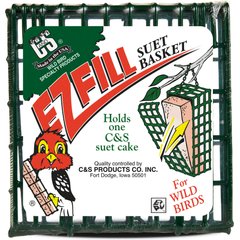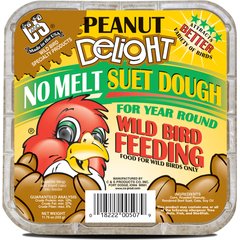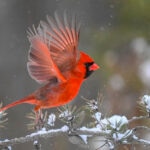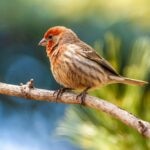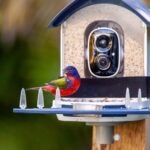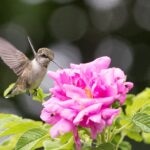Everything To Know About Woodpeckers, Where They Live, and What They Eat
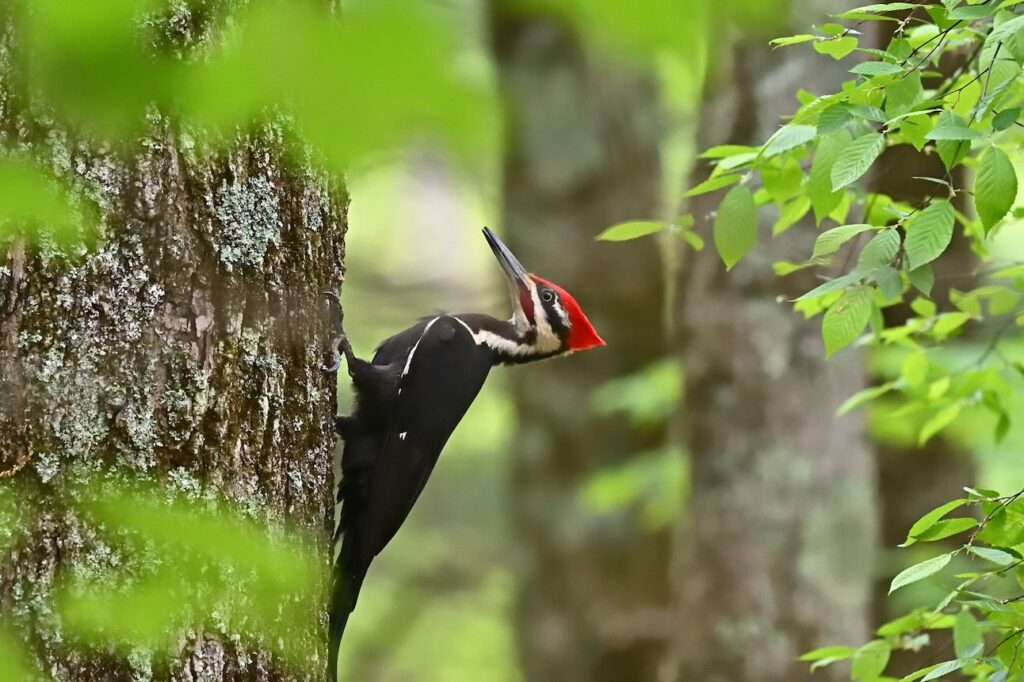
Photo by Robert Winkler/E+ via Getty Images
If you live somewhere with an abundance of trees, you’ve probably come across a woodpecker at some point—or at least have heard them.
These birds come in all different shapes, sizes, and colors, but they’re widely known for their pecking sound as they carve into wood to build nests and search for food. Here’s everything to know about this unique forest bird.
Key Takeaways
- Woodpeckers are essential to forest ecosystems; they create nesting cavities used by other wildlife.
- There are 22 woodpecker species in the U.S.
- To attract woodpeckers, provide suet feeders and bird baths.
What Is a Woodpecker?
Woodpeckers are a species of bird belonging to the Picidae family. They come in a wide range of colors, shapes, and sizes, but woodpeckers all share certain anatomical features:
- Stiff and pointed tail feathers that help them climb up trees
- Unique toe anatomy, called zygodactyl, with two toes pointing forward and two pointing backward to help them grip trees
- A strong beak used for pecking wood to build nests and search for food
In fact, woodpeckers are nicknamed the Keystone engineers of the forest, says Kaitlyn Parkins, glass collision program coordinator at the American Bird Conservancy, because after they leave their nest, other animals—like squirrels, bats, and blue birds—can use those nesting cavities as their home.
“Those species can’t make those cavities on their own,” Parkins says. “So, woodpeckers are really important in that way.”
Woodpeckers are generally found in forests worldwide, but some species are also desert dwellers.
Types of Woodpeckers
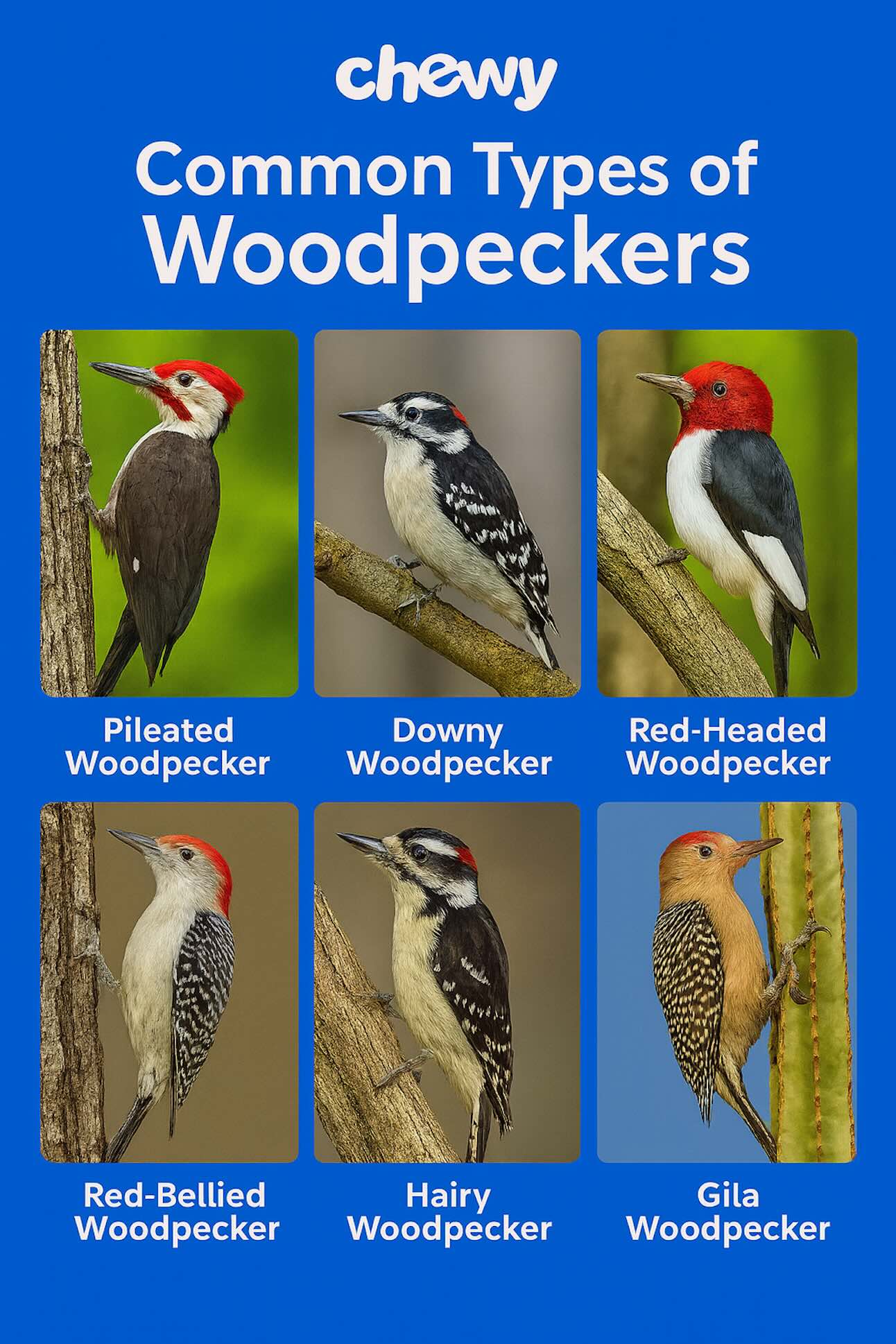
Photo by Chewy
There are 236 species of woodpeckers worldwide, according to Kathi Borgmann, Ph.D., ornithologist and communications manager at the Cornell Lab of Ornithology.
In the U.S., there are 22 species of woodpeckers, Parkins says. The most common woodpecker species found in the U.S. include:
- Pileated woodpecker: Found in the eastern and northwestern parts of North America, pileated woodpeckers are the largest woodpecker in the U.S.—basically the size of a crow! They have a red crest and a black body with white stripes.
- Downy woodpecker: The smallest woodpecker in the U.S., downy woodpeckers are typically black and white. Males have a small red spot on the back of their head. Downy woodpeckers are found throughout the continental U.S.
- Red-headed woodpecker: Red-headed woodpeckers have a very bright, entirely red head that’s very distinctive from other species. While they live in the Midwest and eastern parts of the U.S., this woodpecker type is unfortunately declining due to habitat changes and low food supply.
- Red-bellied woodpecker: Despite what their name suggests, red-bellied woodpeckers don’t have a red belly, Parkins says. Instead, they have a spotted black and white pattern on their back with an orange-red crest. You can find red-bellied woodpeckers in forests across the East and Midwest.
- Hairy woodpecker: Hairy woodpeckers look almost identical to downy woodpeckers, except they’re bigger and have a longer bill. They’re found across North America and Central America.
- Gila: Found in the Southwestern U.S., Gila woodpeckers are unique in that they’re desert birds who nest in living saguaro cacti. They have brownish heads with a black-and-white striped back.
Where Do Woodpeckers Live?
Woodpeckers are commonly found in mature forests across the U.S., except for the cacti-dwelling Gila woodpecker.
Almost all woodpeckers prefer living in dead and rotting trees, says Dale Gentry, director of conservation for the Audubon Upper Mississippi River, where they easily and quickly build cavities with plenty of room for nesting and laying eggs. For some woodpeckers, it can take only a week to drill a nest inside a dead tree.
Woodpeckers are excellent indicators of forest health, Gentry says, because the healthy forest includes a mix of different-size trees. Many animals also rely on woodpeckers for their homes; other birds and wildlife will take over the woodpeckers’ cavities once they leave.
Do Woodpeckers Migrate?
Woodpeckers reside in forests year-round but will do short-term migrations if they’re having a hard time finding food, says Gentry.
“When insects become scarce in the winter, [woodpeckers] have to be really good at finding insects under the bark,” says Gentry. “If they have a hard time finding them, then they have to migrate to somewhere where insects are a little bit easier to track down.”
For example, a red-headed woodpecker might migrate from Minnesota to Missouri.
What Do Woodpeckers Eat?
While most woodpeckers eat insects, their diet varies depending on the species.
Hairy woodpeckers and downy woodpeckers like to eat insects that live under the bark of trees, while another species, called the northern flicker, eats ants. Red-headed woodpeckers actually catch insects in midair, and there’s another species called the acorn woodpecker that eats—you guessed it—acorns.
A woodpecker’s diet also changes seasonally, says Parkins. During the winter, they look out for food that is a good source of fat, such as suet.
How To Attract Woodpeckers
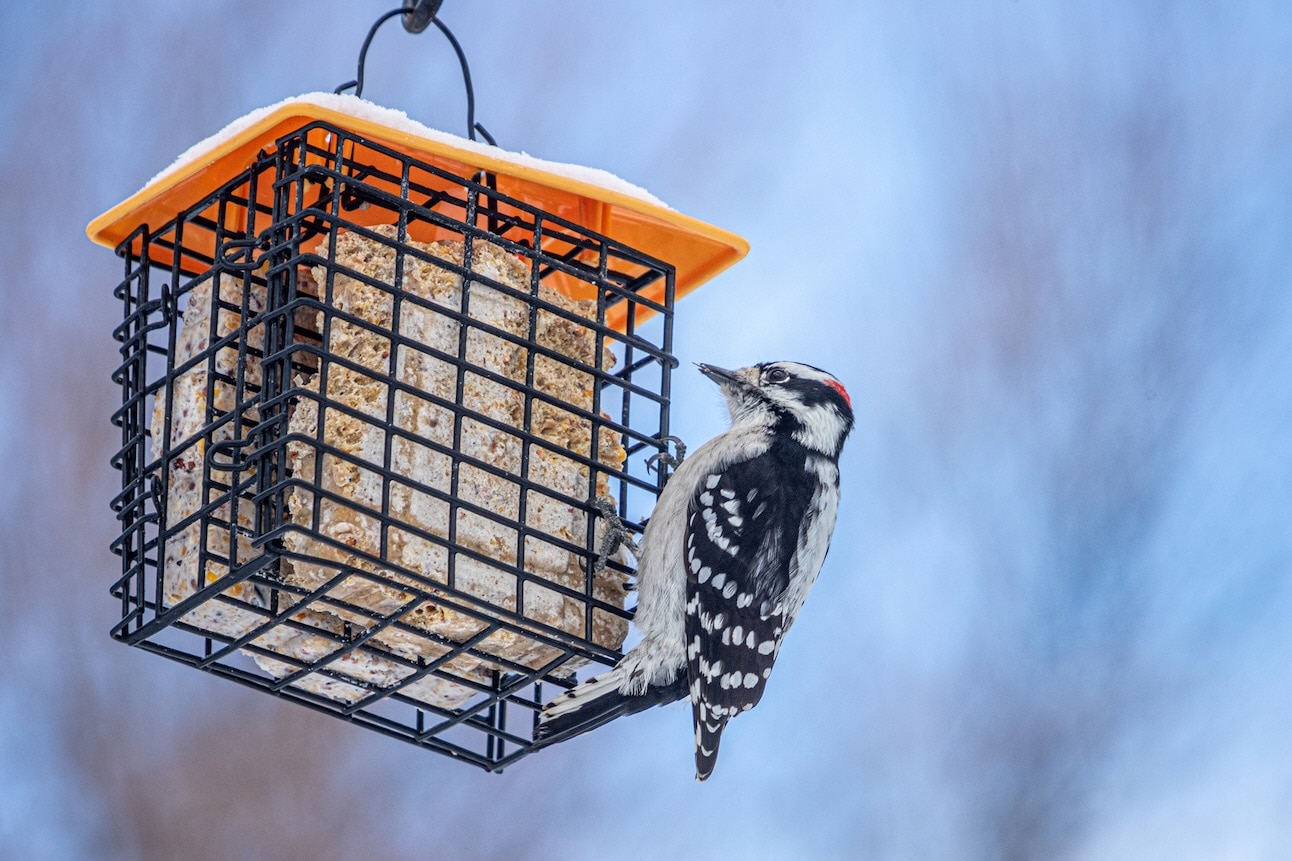
Photo by marcophotos/E+ via Getty Images
The best way to attract woodpeckers to your yard is to have a bird feeder with suet cakes inside.
Recommended Products
Bird baths are another great way to attract woodpeckers—or any bird—to your yard, Parkins says. You’ll also want to make sure you keep woodpeckers safe, such as keeping your cats inside and treating your windows so birds won’t collide with them.
How Do You Get Rid of Woodpeckers?
As fascinating as woodpeckers can be, they can sometimes cause damage to homes, making them an unwelcome visitor.
“One thing to keep in mind is that, often, if woodpeckers are drilling holes in your siding or in your house, it’s because of the presence of a food source, which is insects,” says Parkins.
If a woodpecker is trying to renovate your house, inspect your home and ensure there are no insect infestations. Once that’s taken care of, the woodpecker will most likely find another place to peck.
You can also place shiny reflective objects, such as pinwheels and streamers, around your home to keep them away. And any holes can be covered with wood putty to discourage additional pecking.
FAQs About Woodpeckers
Why do woodpeckers peck wood?
Woodpeckers peck wood to build their nests, to search for food, and to alert other woodpeckers of their territory.
Downy woodpecker vs. hairy woodpecker: What’s the difference?
Downy woodpeckers and hairy woodpeckers look nearly identical to each other. The only difference is that hairy woodpeckers are bigger and have longer bills compared to downy woodpeckers.
Is it good to have woodpeckers in your yard?
Most people enjoy having woodpeckers in their yard as long as they don’t damage their homes. “They are beautiful, they’re interesting to see, and so a lot of people put those feeders up to attract woodpeckers, and they’re happy to have them around,” says Gentry.
What do woodpeckers like to eat the most?
Woodpeckers typically eat insects found in and under the bark of trees. In the winter, they’ll look for fattier substances such as suet.
What time of day do woodpeckers peck?
Woodpeckers are most active in the mornings and the evenings, says Gentry. They tend not to be around during midday, which is usually the hottest part of the day.
